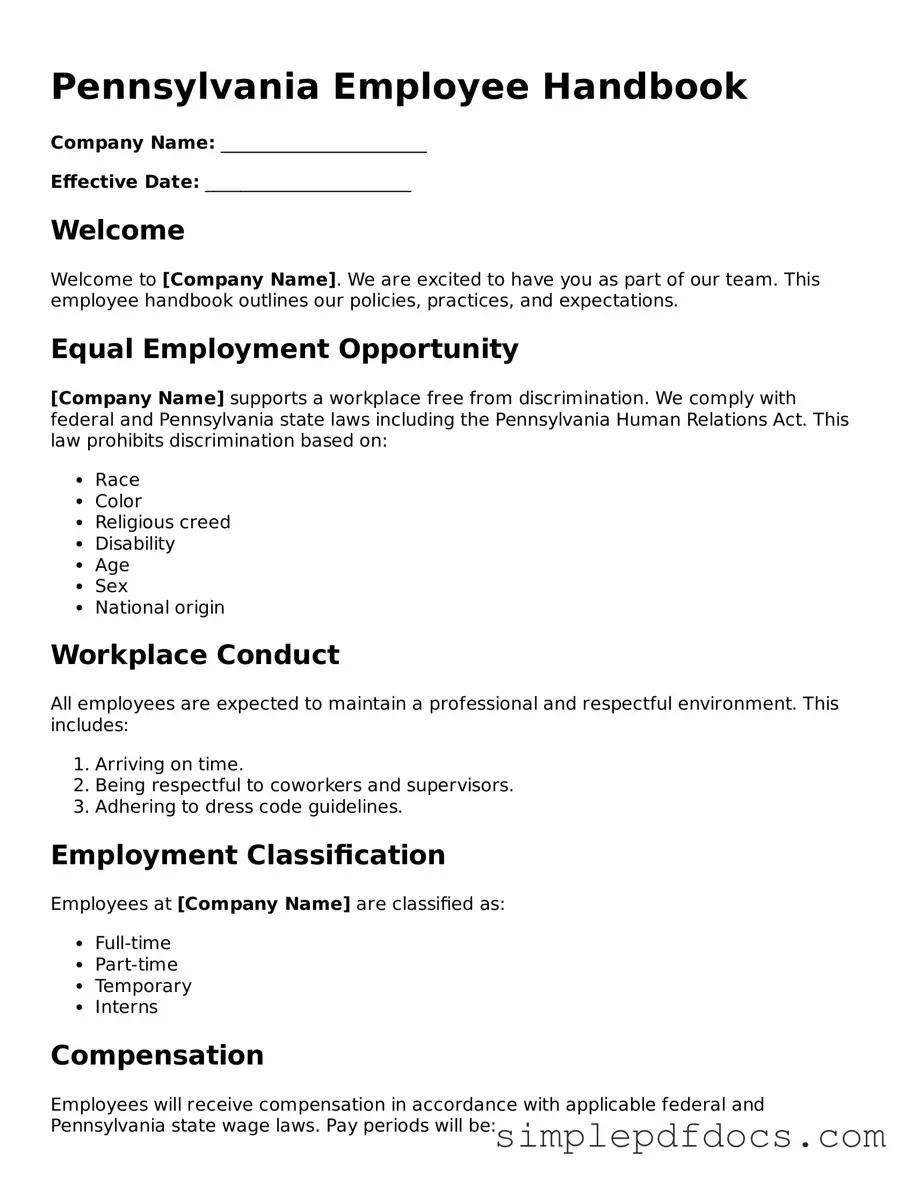Legal Employee Handbook Document for the State of Pennsylvania
The Pennsylvania Employee Handbook form serves as a vital document that outlines the rights, responsibilities, and expectations of both employers and employees within the state. This form provides clarity on workplace policies, procedures, and benefits, ensuring that all parties are informed and aligned. By establishing a clear framework, the handbook helps foster a positive work environment and mitigate potential misunderstandings.
Get Document Here
